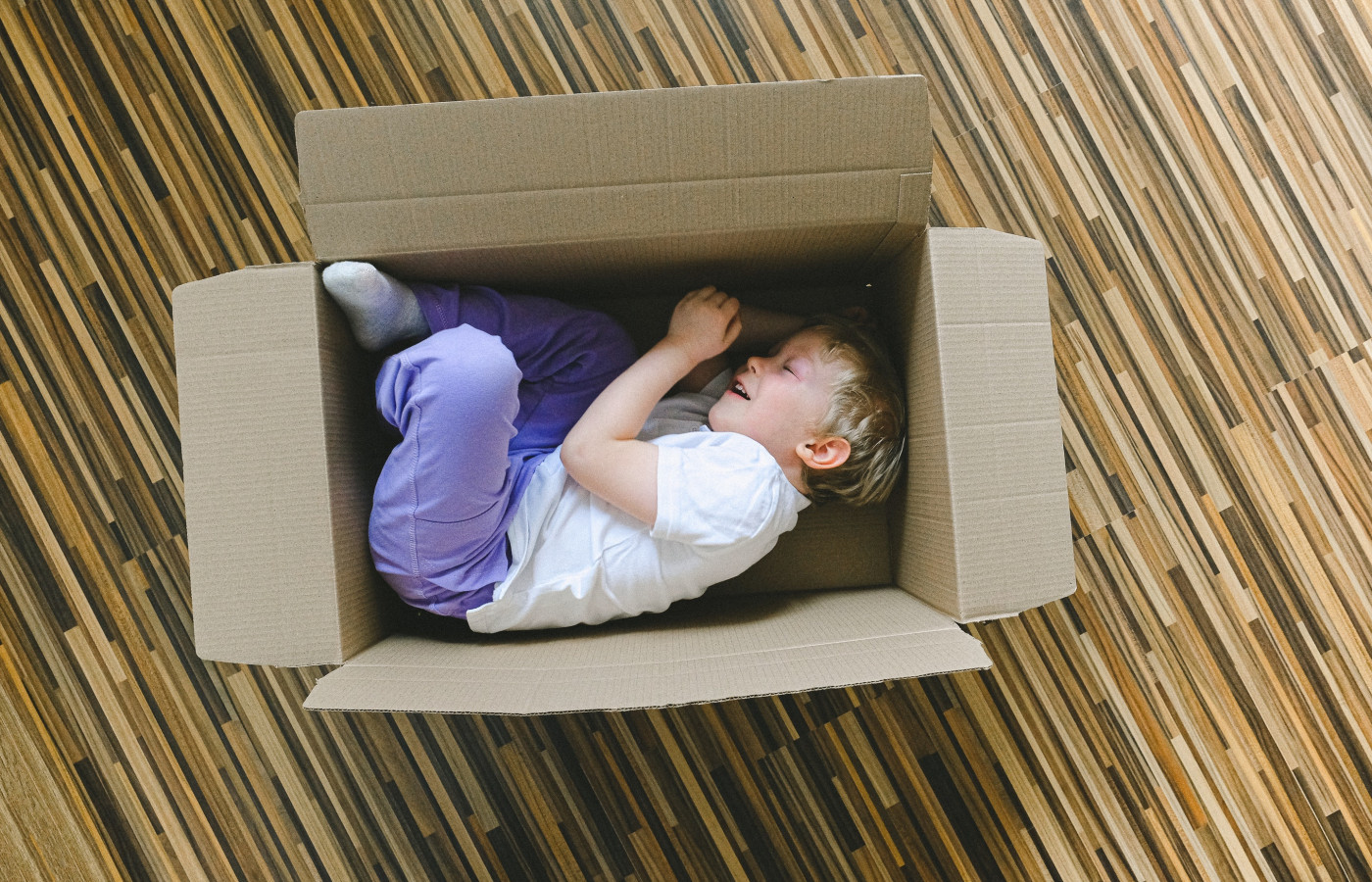Hiding inside!

Hiding inside!
Enveloping play with cardboard boxes
Materials Required
- Medium - large cardboard boxes
Play experience profile
-
Ages:
-
Min Playtime15 - 30 Minutes
-
Skills
-
Energy LevelActive play
-
Messiness Rating
-
EYLF Outcomes
Play Experience Preparation
Collect cardboard boxes (e.g. from deliveries, local supermarkets etc.)Experience Steps
- Open one side of the cardboard box.
- Your child might choose to crawl inside the box or perhaps will be fascinated by flaps opening and closing. Allow plenty of time for your child to explore the cardboard box freely.

What to talk about, or questions to ask during the experience
- Positional language: inside, outside, on top, next to, underneath
- Open, closed
- Hiding, disappeared
- "I can see you!", "There you are!"
Build on this...
- Use art and craft materials to decorate/transform the exterior of the box. It could become a home, a car, a dinosaur etc.
- Play peek-a-boo
- Sing 'Pop goes the weasel' and pretend to be a Jack-in-the-box toy
- Collect more boxes of various sizes to use for construction
- Use multiple boxes to create an obstacle course e.g. use boxes to jump over, crawl through, walk around
WHO guidelines for physical activity and sedentary behaviour
Provide evidence-based public health recommendations for children, adolescents and adults on physical activity.
Learn more
Provide evidence-based public health recommendations for children, adolescents and adults on physical activity. Learn more
Throughout this experience your child will have the opportunity to be moving in many different ways e.g. climbing in and out of the box, crawl around the box, push and pull the box.
EYLF Outcomes
The Early Years Learning Framework has been designed for use by early childhood educators working in partnership with families, children’s first and most influential educators.
View PDF
The Early Years Learning Framework has been designed for use by early childhood educators working in partnership with families, children’s first and most influential educators. View PDF
- Children develop dispositions for learning such as curiosity, cooperation, confidence, creativity, commitment, enthusiasm, persistence, imagination and reflexivity
- Children take increasing responsibility for their own health and physical wellbeing
EYLF Principle
Principle 1: Secure, respectful and reciprocal relationships. Through a widening network of secure relationships, children develop confidence and feel respected and valued.
EYLF Practice
Practice: Learning through play. Play can expand children’s thinking and enhance their desire to know and to learn. In these ways play can promote positive dispositions towards learning. Children’s immersion in their play illustrates how play enables them to simply enjoy being.
Author:


